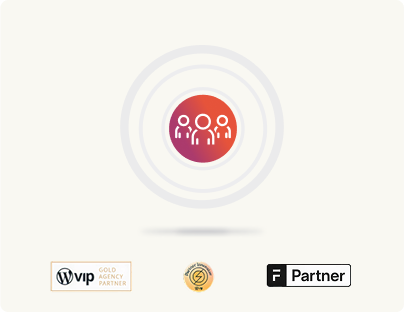What is WordPress?
WordPress has long been established as an enterprise CMS, supporting some of the world’s largest and most complex digital ecosystems.
Now, with businesses demanding more control over content delivery, WordPress has evolved to offer a headless solution as well. But its shift to delivering headless capabilities is quite impressive, as it does so without compromising on the user-friendly experience it’s known for.
Its transition also shows how well it has adapted to the evolving content management and delivery needs.
Starting as a fullstack (traditional) CMS
WordPress began as a traditional, full-stack CMS primarily focused on blogging. Over the years, however, it has evolved into a comprehensive web management platform, now powering more than 40% of the web.
This growth isn’t just about popularity, it’s about engineering flexibility. WordPress’s open-source architecture gives enterprises full control over their digital stack. You’re not boxed into a proprietary system. You can shape the platform around your needs, whether that’s scaling globally, enforcing governance, or launching custom editorial workflows.
We’ve seen clients use WordPress to manage everything from newsroom publishing systems to multisite brand architectures, without running into vendor limits or license friction. That freedom matters.
The shift to headless content delivery
The release of the WordPress REST API in 2016 marked a pivotal moment. It opened up headless capabilities, allowing developers to build decoupled frontends in modern JavaScript frameworks like React, Vue, or Angular, while still relying on WordPress as a familiar, content-rich backend.
Later came GraphQL support (via community plugins like WPGraphQL), enabling more efficient data querying. Combined with custom post types, taxonomies, and ACF (Advanced Custom Fields), WordPress became a flexible headless CMS that doesn’t sacrifice content structure or editorial comfort.
In real-world use, this shift enables developers to build lightning-fast SPAs and mobile apps, while content teams continue working in a UI they already understand.
The hybrid architecture
Unlike headless-only platforms, WordPress doesn’t force you into a single model. You can run parts of your site with templates (useful for quick marketing pages or blogs), and other parts with decoupled frontends via REST or GraphQL APIs.
This hybrid CMS architecture is especially valuable for teams transitioning to headless gradually or running mixed-use cases where not everything needs to be decoupled.
Imagine a publishing brand with a decoupled React-based homepage, but still managing landing pages and blogs through Gutenberg and native templating. That’s the flexibility WordPress enables without maintaining two completely separate systems.
The WordPress advantage
WordPress’s evolution isn’t just technical, it’s strategic. It continues to adapt to how enterprises work, grow, and scale. From marketing teams pushing updates on the fly, to developers shipping frontends in Next.js or Astro, WordPress supports both agility and structure.
The open-source nature ensures no vendor lock-in, the ecosystem offers thousands of plugins and integrations, and concepts like OnePress now bring a new layer of governance, scalability, and shared infrastructure to WordPress at an enterprise scale.
In a landscape full of headless CMS options, WordPress stands out not just for what it can do but for how many ways you can make it work for you.
For teams that need content velocity, design flexibility, and future-ready infrastructure, WordPress offers a platform that continues to grow with your ambitions.







